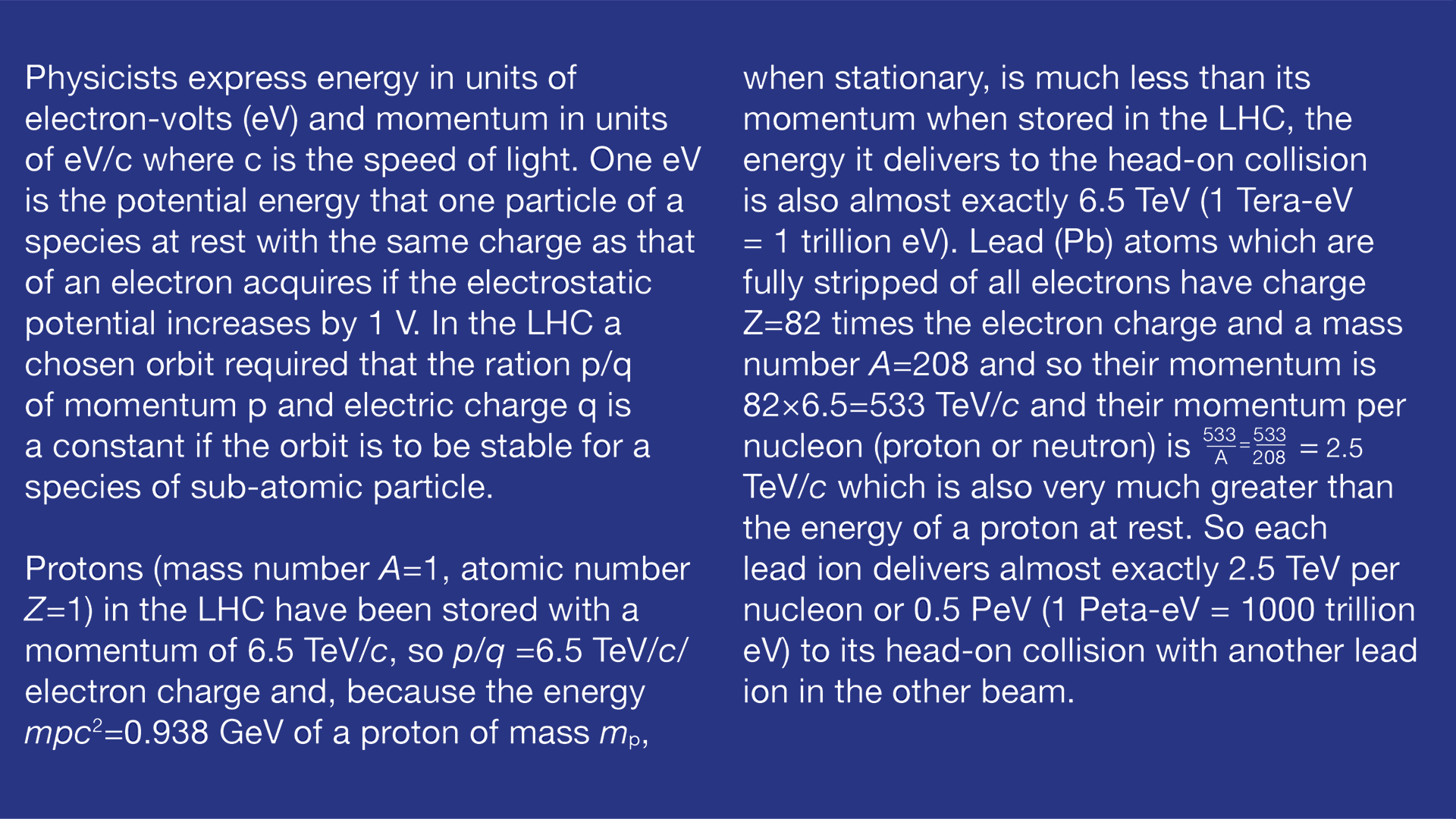Marielle Chartier, Professor of Physics at the University of Liverpool and member of the ALICE collaboration, explains how a fundamental perspective on the nuclei of atoms is beginning to emerge from new nuclear physics measurements at the Large Hadron Collider at CERN.
In 1911 in Manchester, UK, Ernest Rutherford discovered that the mass of an atom was concentrated almost entirely at its centre, the nucleus. In the decades that followed, further discoveries led to an appreciation that these nuclei could be understood as collections of neutrons and protons. Today, nuclear physics is part of the technology of progress, enabling sustainable energy production, pivotal medical treatments, powerful probes of physical and biological structure and function, materials science, and engineering, and even techniques in archaeological and historical research and scholarship.
Furthermore, the phenomenological understanding of the physics of the atomic nucleus is now sufficiently precise as to provide critical information in the quest for answers to the fundamental issues posed when we try to understand the laws of physics in their simplest form and in their application to the physics of the Universe.
Furthering our understanding of the atomic nucleus and hadronic matter
Despite this impressive achievement, we still have little understanding of the place of the atomic nucleus in a robust theory of the swathe of mass of all visible matter, known as hadronic or baryonic matter, in the Universe. Our modern perspective is, in terms of sub-atomic physics, described in the Standard Model (SM) at a sub-femtoscopic scale. At this scale, electrons (and other leptons) and quarks (the simplest manifestation of hadronic matter) interact with each other and with themselves in interactions whose dimension is no bigger than a fraction of a femtometre (10-15m), that is, no bigger than a fraction of the size of an atomic nucleus of hydrogen (one proton).
We understand the interactions between leptons, as well as between matter and leptons, in particular electrons, at this scale in terms of the electroweak force. We are able to predict many features of the interactions of matter at the shortest possible distance scales in terms of the chromodynamic force between quarks. However, we have no clear answer to why there are distinct and independent electroweak and chromodynamic forces. As well as this, we only have a vague idea of why the chromodynamic force in nature is visible in ‘everyday matter’ as the nucleus of protons and neutrons which anchor the stability of the atom.
Experiments at the Large Hadron Collider
Carrying out physics experiments – observing and measuring – at a sub-femtoscopic scale requires control of two beams of sub-atomic species and their delivery at high energy to collide head-on. The higher the momentum of each beam, the finer the detail (and the greater the complication), which is visible in an interaction between two energetic sub-atomic particles, one in each beam.
In the Large Hadron Collider (LHC) at the European Particle Physics Laboratory CERN (near Geneva, Switzerland), the simplest atomic nuclei of hydrogen (protons) are brought into head-on collision, as are beams of atomic nuclei of lead and of xenon. When protons are injected, the LHC accelerates and then stores them in two underground counter-rotating beams with momentum of 6.5 TeV/c (see text box below).
A head-on collision of a pair of protons therefore delivers 13 TeV of energy to their interaction. A pair of lead ions which are stored in the LHC in the same orbits as the two head-on protons delivers 2.5 TeV per nucleon to its interaction with the other lead ion in the other beam, amounting to an unprecedented interaction energy for a sub-nuclear collision of about 1 PeV (1015 eV) (see text box below).
The collisions of such atomic nuclei are therefore spectacular (Fig. 1), especially when a large fraction of the 1 PeV contributes to the interaction of the part or parts of each incident lead nucleus. If all the interaction energy is delivered to the part of each colliding nucleus which participates in the collision, then fragments can be detected from the interaction in a ‘central’ collision initiated by the complete overlap of each incident nucleus’ profile as seen by the other. Such central collisions are rare. More often, only a part of each profile overlap, leading to a lower energy interaction with a somewhat less complicated but still spectacular outcome in which fragments in each nucleus continue their way along each beam direction after the interaction.
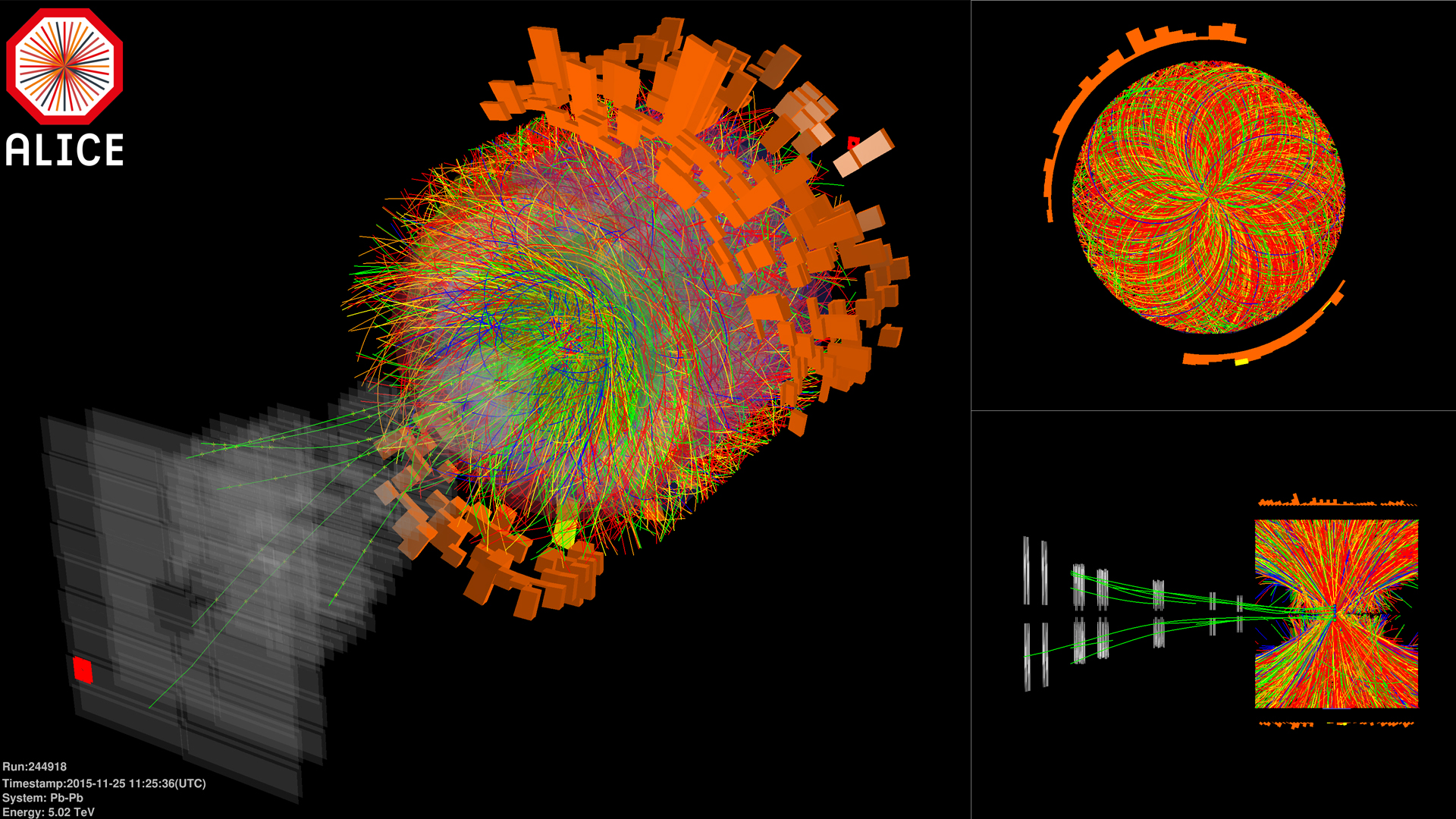
The detection of fragments in the outcome of individual collisions is therefore the challenge for an experiment at an interaction region (IR) at the LHC. The ALICE experiment at IR2 in the LHC was conceived and designed with a focus on the detection and measurement of the sub-atomic fragments from these heavy-ion collisions to study and characterise the properties of the high-density, high-temperature phase of strongly interacting matter, known as the quark-gluon plasma (Fig. 2). They come in the form of the ‘stuff’ of hadronic physics, not just the neutrons and protons and other nuclei. At such a high interaction energy, they also come in the form of more exotic femtoscopic and sub-femtoscopic sub-atomic particles, mainly hadrons, but also leptons, that signal rarer forms of the mass of visible matter in the Universe.
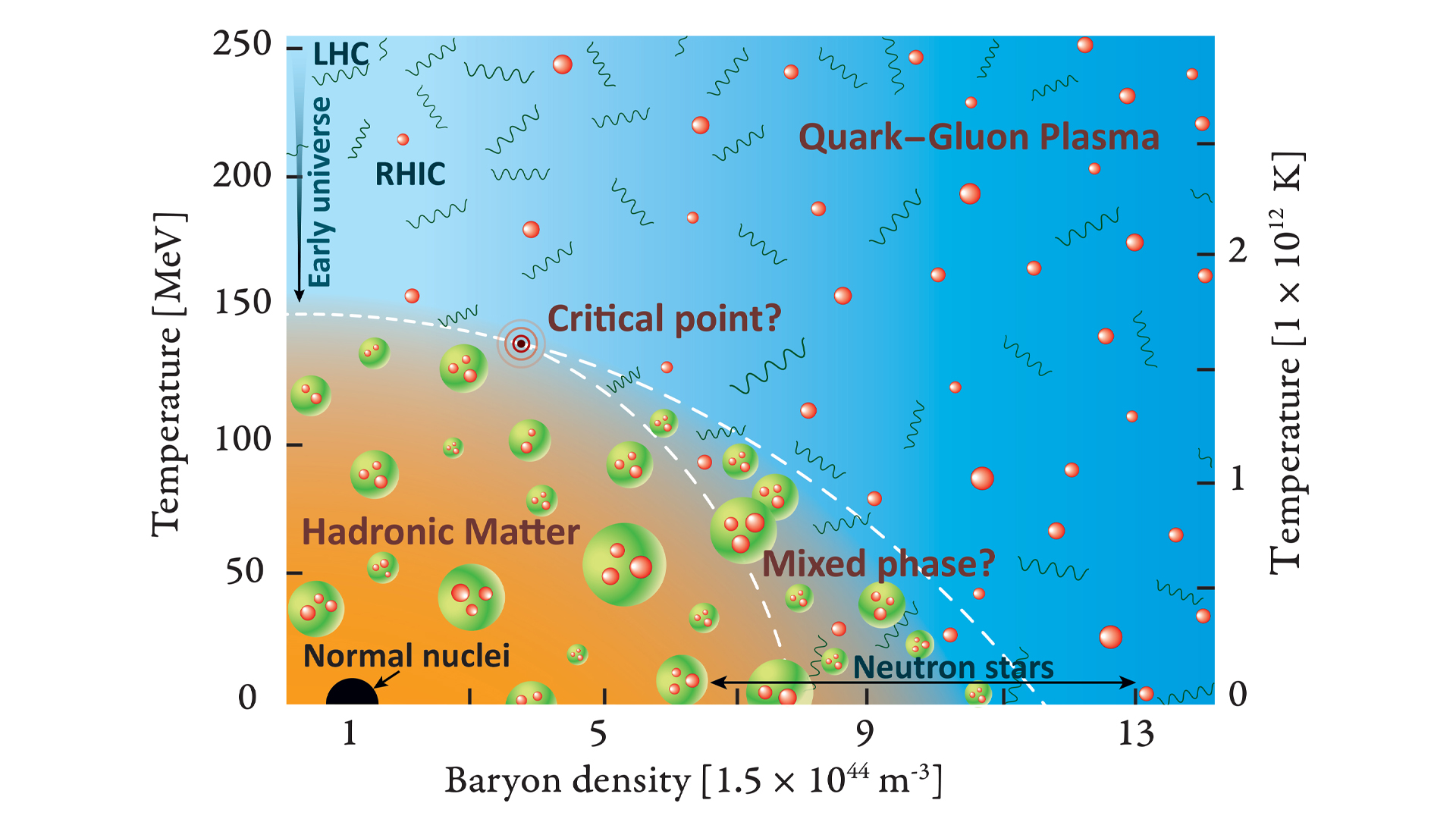
The ALICE experiment is therefore an assembly of detectors, each of which is sensitive to different species of such particle fragments, for example charged and uncharged or neutral, stable, or unstable, heavy, or light. These detectors sit and work together, temporally synchronised with the LHC when it delivers two ‘bunches’ of lead ions, or protons, one in each of its two counter-rotating, stored beams to IR2, every 25 ns (nanosecond or billionth of a second). The ALICE experiment, like the other three experiments at the LHC IRs, is therefore a technical triumph of substantial magnitude. The functionality of these high-energy physics experiments depends on the coherence of sophisticated electronics and computer technology and consistently relies on the close collaboration of hundreds of physicists, engineers, technicians and students from research centres worldwide.
The upgraded ALICE experiment
After nearly ten years of research and development, the ALICE collaboration has now completed a major upgrade of its experimental apparatus during the second long shutdown period of the LHC, which started at the end of 2018. At the heart of this endeavour is a new Inner Tracking System (ITS2) using state-of-the-art silicon pixel technology. On top of this, an upgraded time projection chamber, a new muon forward tracker, a new fast-interaction trigger detector, forward diffraction detector, new readout electronics and an integrated online–offline computing system are all central to its development.
The new ALICE ITS2 is the largest silicon pixel tracker ever built and the first that is made entirely of CMOS sensors, making it the most pixelated, as well as the thinnest, silicon particle tracker at the LHC. The ITS2 upgrade is a full replacement of the original ALICE silicon tracker installed over a decade ago for the start of the LHC. The new tracker consists of seven cylindrical, concentric layers of CMOS monolithic active pixel sensors (MAPS): three inner layers forming the Inner Barrel, surrounded by two middle and two outer layers forming the Outer Barrel (see Fig. 3). The ITS2 detector comprises in total approximately 24,000 CMOS sensors each containing 1024 x 512 pixels of approximately 28 μm2 in size, making it a giant (approximately 10 m2) digital camera of nearly 13 billion pixels, capable of taking 50,000 pictures per second.
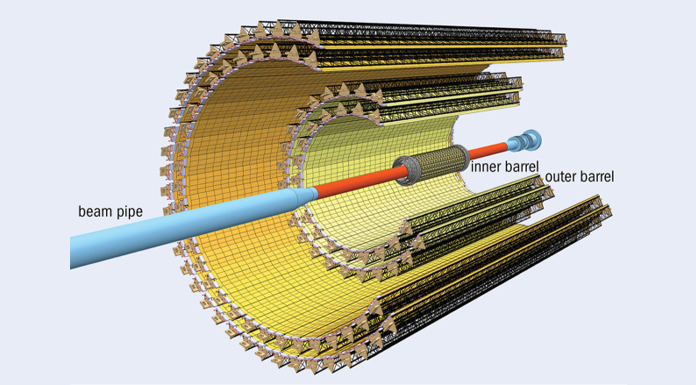
The UK ALICE groups at the University of Liverpool and at STFC Daresbury Laboratory in Cheshire joined the ALICE collaboration approximately ten years ago and have made a leading contribution in the construction, assembly, and commissioning of the ITS2 upgrade. Designing and building such a complex detection system requires the coordination of the skills and effort of a large number of research institutes. The ITS2 Inner Barrel was built at CERN. The construction of the Outer Barrel modules and staves was carried out simultaneously at ten sites worldwide (in China, France, Italy, Korea, The Netherlands, the UK, and USA), including in the Liverpool Semiconductor Detector Centre (LSDC) at the University of Liverpool and in the Engineering Technology Centre (ETC) at STFC Daresbury Laboratory.
Having completed the production of more than 600 modules and 22 staves for the Outer Barrel in 2019, the UK groups joined the international effort at CERN in the assembly of the full detector, its installation and commissioning over the last two to three years. The complete detector, its services and electronics were assembled in a clean room laboratory at CERN from all the components manufactured around the world, then underwent a period of verification and testing, before being transported and installed in the ALICE cavern at the LHC IR2 in spring 2021 (see Fig. 4).
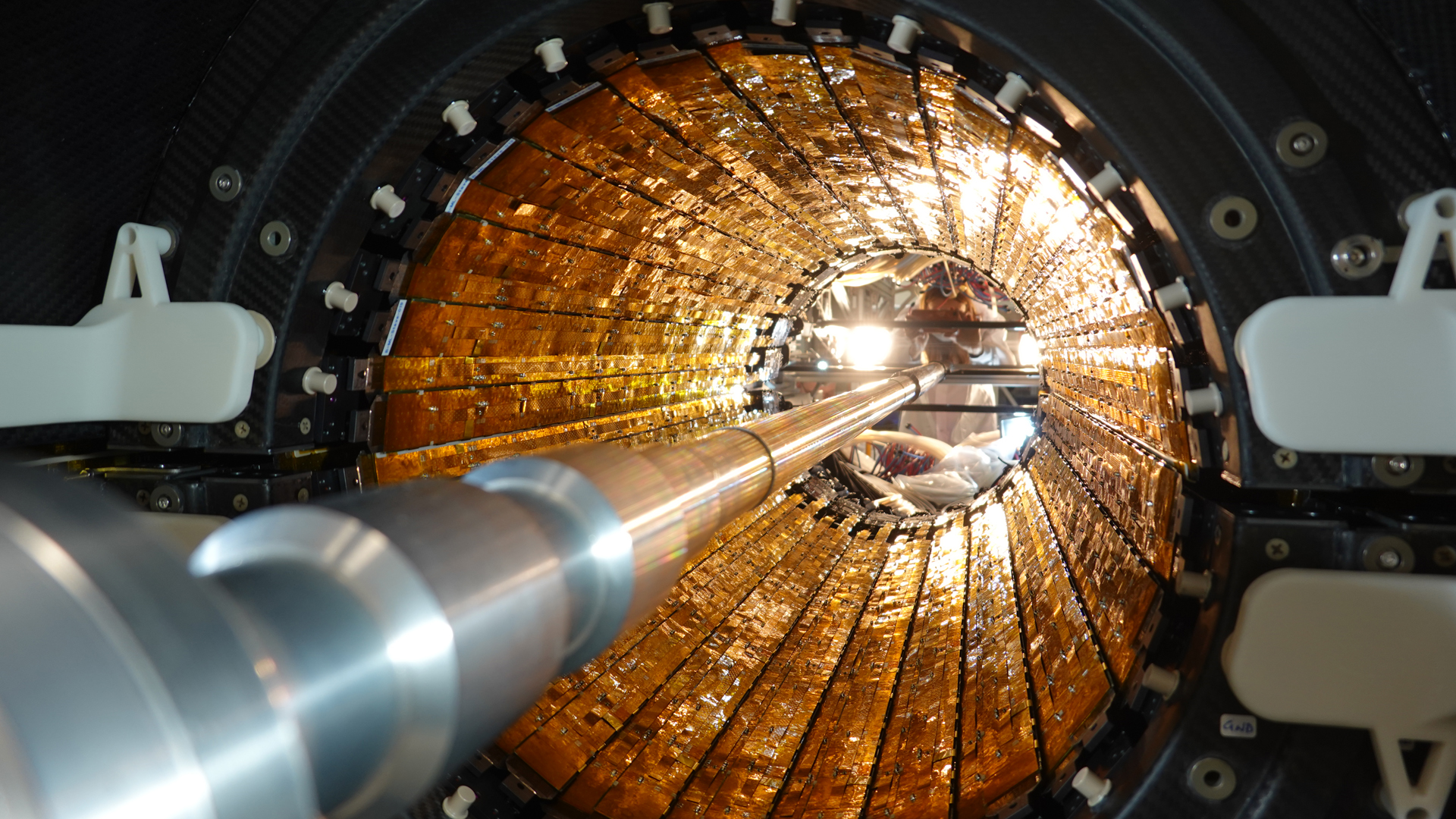
With most of its new or refurbished detector systems installed, summer 2021 saw the start of an intense period of ‘global’ commissioning of the upgraded ALICE experiment. In October 2021, as part of the commissioning of the LHC machine itself, in preparation for its Run 3, so-called ‘pilot beams’, at an injection energy of 450 GeV per proton beam, were circulated in the LHC and delivered low-intensity proton-proton collisions to the four LHC experiments. Given the complexity of all the new and upgraded sophisticated systems running together for the first time, the very first event displays of particle tracks reconstructed from the data of these pilot beam collisions was a hugely important and significant milestone for the ALICE experiment (see Fig. 5).
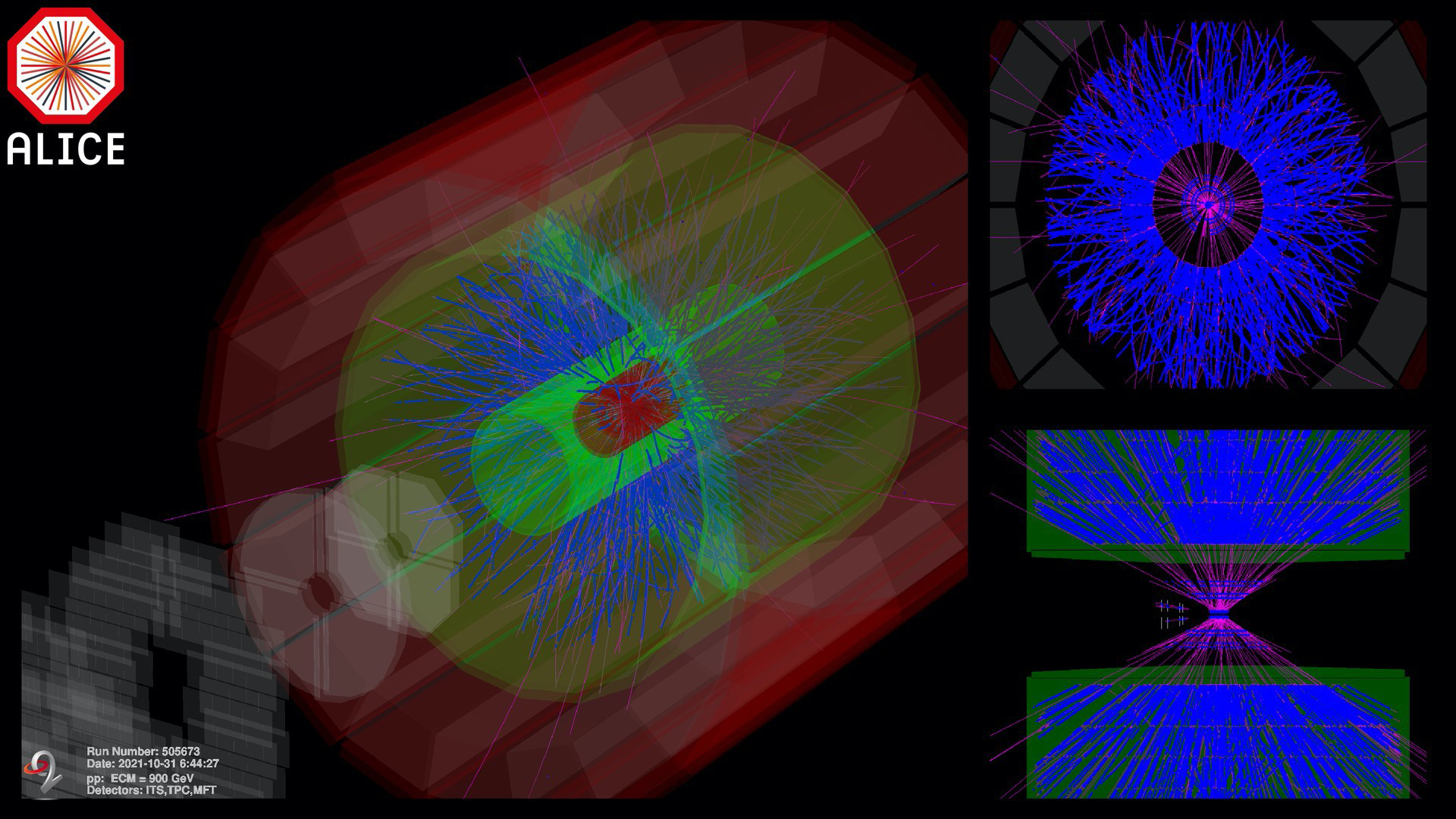
The future of heavy-ion collisions at CERN
Fully revitalised and modernised, ALICE has now eagerly completed its final preparations over the winter to commence its third run of operations from spring 2022, which marks the end of the LHC second long shutdown (see Fig. 6). During the Runs 3 and 4 of the LHC, which will be taking place over the next decade, ALICE will be able to collect much more data from the LHC proton-proton, proton-ion and heavy-ion collisions much more quickly than hitherto. With its new and improved capabilities, ALICE will focus on high precision measurements of short-distance dynamics in QCD (quantum chromodynamics) at high temperature. ALICE also hopes to gain a deeper understanding of the quark-gluon plasma. In particular, new measurements are foreseen, down to very low transverse momentum, of rare probes such as heavy-flavour particles, quarkonium states, real and virtual photons, as well as measurements of jet quenching and exotic heavy nuclear states.
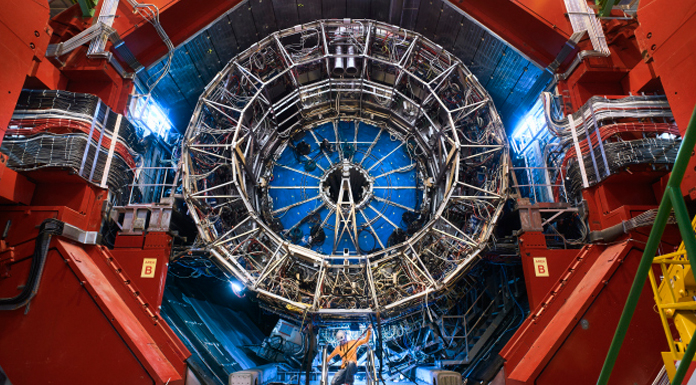
Having just spent the best part of a decade preparing for this new phase of data gathering and physics harvest for the decade to come, members of the ALICE collaboration have already started thinking about the future of heavy ion collisions that will take place in the LHC’s final decade of operation. An ambitious programme of research and development has been launched to ensure the availability of new technologies in this time scale, which are needed to achieve longer-term future scientific goals. Future progress also requires faster and more sophisticated detectors and computing systems. To this end, the ALICE collaboration recently published1 its proposed plans for a next-generation heavy-ion experiment, ALICE3, to make the most of opportunities at the LHC in the 2030s and early 2040s and continue to be globally the pre-eminent experiment at the cutting-edge of high-energy hadronic physics and QCD.
Note: The size of an atom is typically 0.1 nm (nanometre) or 10-10m. The size of the lightest atomic nucleus (or one proton), hydrogen, is of order 1.2 fm (femtometre) =1.2×10-15m. In the Standard Model, an electron, together with higher mass leptons, have sizes which are consistent with what we call point-like by which we mean that it has a structure that is a consequence of its interactions and not of any composition of constituents. Likewise, a quark is consistent with being point-like.
Reference
- Letter of intent for ALICE 3: A next generation heavy-ion experiment at the LHC – ALICE Collaboration: CERN-LHCC-2022-009

